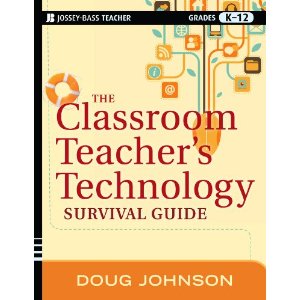The second half of creativity
 Monday, March 5, 2012 at 06:25AM
Monday, March 5, 2012 at 06:25AM In preparing for my webinar for Linworth "Developing Creativity in Every Learner" tomorrow afternoon, I've been thinking and reading about how one might assess creativity*. (Thinking - boy that hurts!) One common recommendation is that creativity needs to be defined before it can be assessed.
I've always had the same attitude toward creativity that Supreme Court Justice Potter Stewart had about pornography: that while he couldn't define it, he knew it when he saw it.
Apparently I am not the one who struggles with the definition of creativity. According to creativity guru, Donald Treffinger (Assessing Creativity: A Guide for Educators. NCR G/T, 2002), there are over 100 definitions of creativity in the literature.
While I can't claim to have read them all, those I have looked at have two components in common. First, that creativity has an element of the new, the innovative, the original - something not yet done before. OK, this is not surprising.
But the second, too often overlooked, common element in most definitions is that creativity adds value to the task or objective to which it is applied. Not only must the approach be new, it must make the product, the procedure, or the experience more effective. To me, that second element gives educators the key to valid creativity assessment.
We must be asking not just if the work is original, but how the originality improve the end result.
OK, it takes longer for some of us to have those "aha" moments than others. I'll bet most of you already understood this. Sorry.

Any "creative" means you have used to assess if a kid's been creative that I can share during the webinar tomorrow? I will give you full credit.
* Most of the literature seems to be about assessing the innate creativity in individuals using tests and such. I would argue that, like intelligence, all human beings are creative only in different ways, so such measures are rather meaningless. To paraphrase Sir Robinson, it's not if a person is creative but how a person is creative.









Reader Comments (5)
I wonder if the emotional response that creativity can sometimes elicit might be an indicator of it...that is the feeling of pleasure, amusement, astonishment, humbling recognition, ohmygawd! surprize, arrest, delight, pause, curiosity, bewilderment, sometimes even disgust if hallowed cows have been sacrificed as in the response of the French Academie des artistes to the work of the impressionists or the music establishment to Elvis Presley. In the latter two cases, the value added by these creative expressions failed to register with the powers that be.
I wonder if we will find that with the educational establishment needing to reliquish sacred cows like standardized tests in favour of more intimate and personal measures of achievement in the future...
Hi Sheri,
Wonderful points, eloquently stated.
I'd agree that while we often give lip service to encouraging creativity in both learners and teachers, genuine creativity also scares the bejeeezus out of traditionalists. (And we are all traditionalists about some things.)
Thanks for commenting,
Doug
Great post Doug, loved your curation style on creativity.
Creativity = hasn't stolen someone else's images to illustrate their work, but has produced new ones.
It's only part of it, but an important one.
Hi Tom,
I think a person can use other's images but in unique ways. That may be creative as well. Think of the classic photo portraits in Apple's Think Different campaign.
Doug